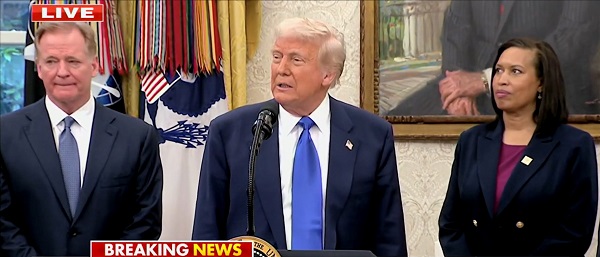Opinion
Olympics approves two men to box against women

From LifeSiteNews
The Olympic Committee approved two male boxers to fight as ‘women’ after previously failing gender tests and being disqualified for having male chromosomes: Lin Yu-Ting of Taiwan and Imane Khelif of Algeria.
“This is France!” Emmanuel Macron crowed on X as the Olympic Opening Ceremony in Paris unfolded. That, unfortunately, was what everyone was afraid of.
The ceremony featured a blasphemous representation of the Last Supper, featuring drag queens as the disciples and Barbara Butch, an overweight lesbian DJ, as the Lord Jesus Christ. The International Olympics Committee has already issued a pseudo-apology and deleted the video from its YouTube channel, but Butch was quite clear that this was a deliberate inversion.
There was more, but suffice it to say that after that ceremony, it is no surprise that the Olympic Committee has approved two male athletes to compete as “women” who were previously disqualified from the Women’s World Boxing Championships in March 2023 in New Delhi, India, for having “XY chromosomes”: Lin Yu-Ting of Taiwan and Imane Khelif of Algeria. At the time, president of the International Boxing Association (IBA) Umar Kremley announced that a number of boxers were being disqualified after “a series of DNA-tests” conducted “uncovered athletes who were trying to fool their colleagues and pretend to be women.”
IBA released a public statement announcing that “a boxer from Algeria, Imane Khelif, was excluded from the IBA World Boxing Championships due to the failure to meet the IBA eligibility criteria.” The Algerian Olympic Committee called the IBA’s decision a “conspiracy” to deny Algeria a gold medal and noted at the time that they hoped Khelif could fight in the Paris Olympics.
After the disqualification, Mexican boxer Brianda Tamara posted about her experience boxing Khelif at the championship on X. “When I fought with [him] I felt very out of my depth,” Tamara said. “[His] blows hurt me a lot, I don’t think I had ever felt like that in my 13 years as a boxer, nor in my sparring with men. Thank God that day I got out of the ring safely, and it’s good that they finally realized.” There are now serious concerns that female boxers could be injured by Khelif and Yu-Ting. Here is Khelif fighting in an earlier match—clearly far stronger than the opponent:
🚨Beating women is now a spectator sport
We have never been more aware as a society of male violence against women
Why are the #Olympics allowing this male to enter the boxing ring with a woman? #Paris2024 @fairplaywomen pic.twitter.com/I4gKzvigJt
— Katherine Deves Morgan 🇦🇺🚺 (@deves_katherine) July 30, 2024
Taiwan’s Lin Yu-Ting, who previously won five gold medals in women’s boxing tournaments, was also disqualified and stripped of a bronze medal. Now, at the Paris Olympics, Khelif is scheduled to fight Angela Carini of Italy on August 1, with Yu-Ting to be paired off with a female fighter the following day.
Marshi Smith of the Independent Council on Women’s Sports (ICONS) spoke with Reduxx about the issue:
The IOC’s decision to end sex-verification screening in 2000 has caused distrust and confusion in women’s sports ever since. Its 2021 decision to offload the responsibility for international eligibility criteria to individual sporting bodies has resulted in varied standards and widespread chaos among athletes, coaches, officials, and the public. In boxing, the recent contentious split between the IBA and the IOC has now placed Olympic eligibility power into the hands of national boxing federations, allowing countries like Algeria and Taiwan to set their own standards and continue placing male boxers in the ring with female athletes in combat for women’s Olympic medals.
This, said Smith, has led to a truly ugly scenario. “The physical abuse of women on an Olympic stage eliminates the integrity of all Olympic events and risks lifelong injury or even death for female athletes. This deceit cannot be allowed to continue.” A 2020 study by the University of Utah concluded that a man’s punch is, on average, about 160-170% more powerful than a woman’s punch.
Crime
DEA Busts Canadian Narco Whose Chinese Supplier Promised to Ship 100 Kilos of Fentanyl Precursors per Month From Vancouver to Los Angeles

A Hollywood-style DEA sting revealed a seamless pipeline from Vancouver brokers to Los Angeles cartel operatives and Australian drug markets.
A senior Indo-Canadian gangster from an ultra-violent British Columbia–based fentanyl trafficking gang with ties to Latin cartels, Chinese Triads, and Hezbollah was taken down in a stunning U.S. government sting that saw a thick-accented Chinese narco casually promise an undercover agent at a Vancouver café that he could ship 100 kilograms of fentanyl precursors per month from Vancouver to Los Angeles, using his trucking company fronted by an Indo-Canadian associate.
The case is detailed in a sprawling DEA probe spanning Turkey, Mexico City, Dubai, Australia, Toronto, Vancouver, Montreal, Hong Kong, and Los Angeles — all captured in a 29-page affidavit with scenes so surreal they could rival a Hollywood script, complete with underworld nicknames like “Burger,” “Queen,” and “Darth Vader.”
At the center is Opinder Singh Sian, a Canadian national and longtime Lower Mainland underworld figure who survived targeted shootings and reportedly leads the Brothers Keepers gang — a key proxy for the Sinaloa cartel in Canada, interoperable with other Latin American cartels, Chinese Communist Party chemical suppliers, and working alongside the Kinahans, a notorious Irish crime family now based in Dubai and closely linked to Hezbollah finance networks.
Sian has been arrested in Arizona and indicted in a sweeping U.S. case that underscores British Columbia’s critical role as a global trafficking hub, bringing together Mexican cartels and Chinese precursor suppliers that operate with near impunity in Vancouver but are increasingly the focus of elite U.S. law enforcement.
The affidavit illustrates how Vancouver’s criminal networks have funneled Chinese precursors into the United States and directly tied them to methamphetamine deals with Mexican gangsters on Los Angeles streets — part of one of the most sophisticated narcotics smuggling conspiracies ever uncovered in North America.
The explosive details are laid out in a newly unsealed affidavit filed by U.S. federal agent Albert Polito in support of a criminal complaint and arrest warrant against Sian. Sworn in 2024, the document offers a rare inside look at how Vancouver’s street-level crews transformed into global brokers bridging continents and more sophisticated criminal syndicates.
Much of the case focuses on methamphetamine shipments from Los Angeles to Australia, orchestrated by Sian, who acted as a proxy for more senior transnational Mexican, Chinese, and Iranian networks, experts say.
“Local gangs like Brothers Keepers aren’t just street crews — they’re frontline proxies in transnational narcoterror networks,” former Canadian intelligence analyst Scott McGregor, an expert on the nexus of Chinese and Iranian threats and foreign interference, commented on X. “Ignoring them as low-level threats misses their role in laundering, logistics, and hybrid warfare.”
But the penultimate finding — likely of high interest in Washington political circles — came from a stunning investigative meeting. In August 2023, the DEA affidavit describes how a shadowy U.S. undercover source known as “Queen” or CS-1 sat across from a man in Vancouver speaking with a thick Chinese accent.
The man, later identified as Peter Peng Zhou, explained in detail how he could “receive fentanyl precursor chemicals from China into Vancouver” and “send 100 kilos of chemicals per month to Los Angeles” using his British Columbia trucking company run by an Indo-Canadian associate.
Zhou allegedly told CS-1 that he had been doing this for about ten years and remembered when these kilograms of chemicals were upwards of $300,000 each. He claimed he knew how to make fentanyl and methamphetamine from the chemicals and emphasized that he would require upfront payment before sending any shipments south to Los Angeles.
Demonstrating how casually Vancouver’s narcos blend into upscale environments, the affidavit describes how Sian first dined at a downtown restaurant with his wife, child, and CS-1 before taking “The Queen” to meet his precursor suppliers at a coffee house.
The Bureau is a reader-supported publication.
To receive new posts and support my work, consider becoming a free or paid subscriber.
That critical meeting, involving Sian, Zhou, and other associates, provided prosecutors with some of the clearest evidence yet of a direct chemical pipeline from Chinese suppliers into North American distribution networks, routed first through Vancouver’s port and trucking infrastructure.
The investigation began in June 2022 when DEA agents in Ankara, Turkey, received intelligence about an opportunity to embed a confidential source into a global trafficking organization. This network needed help moving large shipments of methamphetamine and cocaine from Southern California to Australia — one of the world’s most lucrative drug markets.
DEA agents provided their Ankara counterparts with the phone number of CS-1 — known in global gang networks as “Queen” — who posed as an international logistics coordinator. A Turkish narco, Ibrahim Ozcelik, made initial contact and then passed CS-1’s details to a North American leader: Opinder Singh Sian.
After initial communications, Sian and CS-1 arranged an in-person meeting in Vancouver on February 1, 2023. During this pivotal encounter, Sian claimed to work closely with Irish organized crime — specifically the Kinahan family — as well as Italian groups and other powerful Canadian gangs. Outside Canada, he described sourcing drugs directly from major Mexican and South American cartels, reinforcing his role as a cross-border broker capable of linking multiple criminal networks. He also said he collaborated with a known Turkish drug kingpin, Hakan Arif, highlighting the global scope of his alliances.
While in Vancouver, Sian introduced CS-1 to two male associates. They explained they had about 500 kilograms of cocaine stockpiled and needed help moving it through Los Angeles ports and on to Australia. CS-1 claimed they could facilitate offloading in Los Angeles, repackaging, and onward shipping via container vessel — a scheme designed to tap into Australia’s sky-high wholesale prices, which exceed $200,000 per kilogram.
In March 2023, Sian and CS-1 met again at a restaurant in Manhattan Beach, California, to discuss expanding into methamphetamine smuggling. “Queen” also brought along a DEA undercover agent (“UC-1”), posing as a cousin who worked at the Port of Long Beach and helped move narcotics undetected.
At the meeting, Sian expressed caution, acknowledging they could get in trouble just for meeting. He said his first shipment would be “200,” consistent with earlier encrypted text conversations. UC-1 advised doing fewer but larger shipments to reduce detection risk, emphasizing this was only done for CS-1 as “family.”
Sian pressed for details about the port, probed UC-1’s connections, and mentioned knowing other contacts at the port, the DEA alleges.
By June 2023, the plan to move large methamphetamine shipments into the U.S. began to accelerate. Sian advised that he and his associates would deliver an estimated 500 to 750 kilograms of methamphetamine in separate drops coordinated by his network. On June 13, 2023, Sian created an encrypted chat group using the alias “Cain,” adding “Sticks” (later identified as Sebastian Rollin, a Canadian based in Montreal) and CS-1.
Rollin allegedlly informed CS-1 that his crew would soon deliver 30 pounds of methamphetamine in Southern California as part of the first staged shipment.
Another trafficker known as “El R” or “The R,” later identified as Ruben Chavez Ibarra, entered the operation.
The DEA’s Los Angeles operation revealed gritty street-level deals directly tying Sian’s Indo-Canadian group to “Queen’s” Mexican networks. On July 6, 2023, after days of negotiation, Jorge Orozco-Santana arranged a pick-up in Anaheim using a white Mercedes. He verified the deal with the serial number of a dollar bill token, handed over two plastic bins containing 84.6 kilograms of methamphetamine. The DEA tied this deal to the Montreal network involved in Sian’s encrypted chats.
On July 29, 2023, Sian created a new Threema group chat including a new associate using the moniker “AAA,” later identified as Tien Vai Ty Truong — a dual citizen of Vietnam and Canada, with narco operations in Toronto and Vancouver directed from Hong Kong, according to the DEA affidavit.
The group discussed the 30-pound and 200-pound loads and planned their shipment to Australia. On August 1, Sian asked CS-1 to call an associate named Kular to manage mounting anxiety among Mexican sources over shipment delays.
Meanwhile, CS-1 began discussing fentanyl precursor chemicals with Kular and Sian.
This line of discussion began because Kular had first asked CS-1 whether her networks could receive direct ketamine shipments into Mexico City — a question that suggested to the DEA that Sian’s network likely had direct access to Chinese Communist Party–linked drug suppliers and large-scale chemical manufacturing channels.
In response, the DEA’s High Intensity Drug Trafficking Area Group 48 team prompted “Queen” to pivot and ask about fentanyl precursors. Queen did so, requesting prices on two critical compounds: 1-BOC-4-piperidone and 1-BOC-4-anilinopiperidine. Kular replied that the price would be $225 for the first chemical and $750 for the second, plus $1,000 for shipping.
Shortly after, on July 25, 2023, Sian himself directly contacted Queen, claiming he could supply those same precursors directly and even provide initial samples. He said he could get the chemicals “straight from China,” and proposed shipping them by container into the Port of Long Beach.
To build trust, Sian offered to mail a sample first. On July 29, Queen provided Sian with an undercover DEA-controlled PO box. That same day, Sian confirmed he had sent 20 grams of 1-BOC-4-piperidone and said he would accept cryptocurrency (specifically USDT, also known as Tether) for future large orders. By August 10, Sian informed Queen that the sample shipment had been sent, though it might not arrive until the following week — further confirming the group’s operational capacity to source Chinese precursors and move them into the U.S.
This was the evidence the DEA needed to take the Vancouver port fentanyl sting into high gear.
Returning to Vancouver in August, the headline-making fentanyl meeting came into full context. On August 16, 2023, CS-1 met Sian and his wife and child for lunch in downtown Vancouver. After lunch, Sian drove CS-1 to meet two individuals capable of sending bulk fentanyl precursor chemicals into the United States.
At a coffee shop, Peter Peng Zhou — speaking with a heavy Chinese accent — described how he could receive precursor shipments from China into Vancouver and move 100 kilograms per month to Los Angeles using his British Columbia trucking company.
In an almost absurdly candid aside, Zhou introduced his partner, known as “Burger,” described as a Southeast Asian male who managed “the money side” of the business for him. According to the DEA affidavit, Burger bluntly said he was involved because “his wife was very greedy and wanted him to make more money.”
The pivotal Vancouver coffee meeting also brought in more connections to Mexican operatives in California. During the same meeting, Sian mentioned a contact named Orlando, referring to Orlando Escutia, a Bakersfield, California–based associate. Sian explained that Escutia would be delivering CS-1 an additional 50 kilograms of methamphetamine the following week for shipment to Australia.
Zhou further revealed he could start acquiring a new fentanyl precursor with a CAS number ending in 228, describing it as a “newer and better” chemical for making fentanyl. He elaborated that when he shipped these chemicals by mail, he used a special bag designed to evade law enforcement detection, the DEA alleges.
Later that same day, CS-1 and Sian met with another key figure known as “ABC,” later identified as Kular, at a restaurant in downtown Vancouver. Kular claimed that his own boss, “AAA” — later identified as Tien Truong — was a Chinese national about 55 years old, mainly operating in the Toronto area. According to Kular, Truong’s bosses were ultimately based out of Hong Kong and specialized in moving large quantities of cocaine and methamphetamine around the world.
Daily Caller
‘Strange Confluence Of Variables’: Mike Benz Wants Transparency Task Force To Investigate What Happened in Butler, PA


From the Daily Caller News Foundation
Former State Department official Mike Benz raised serious concerns on Fox News Monday about the events surrounding the shooting in Butler, Pa., asking whether federal law enforcement played a more significant role than originally reported.
It’s been a year since the shooting of President Donald Trump at his rally in Butler, and while investigations have shed light on the incident, several critical questions remain unanswered. During an appearance on “The Will Cain Show,” Benz said he believes the lack of transparency in the case has led to many critical questions remaining unanswered.
“So the question is, if Crooks was cultivated or if he was being monitored or potentially interacted with by federal law enforcement agents who put him onto that? And I think that the total lack of transparency, it’s sort of defying the laws of surveillance state physics,” Benz said. “I think most people believe that if federal law enforcement were to get ahold of their phone, that pretty much everything could be scraped from it. You don’t know if, for example, in this case, he was communicating with a foreign government.”
Benz then raised concerns that the investigation into the Butler shooting could extend beyond the FBI and Department of Homeland Security (DHS), suggesting that agencies like the National Security Agency (NSA) might be involved in cracking encrypted communications.
WATCH:
“This, to me, may go beyond, you know, FBI, DHS. We know that the NSA is able to crack these sorts of things. And so it’s all very strange to me,” Benz said. “But, again, there’s another whistleblower report that I believe Josh Hawley’s whistleblower mentioned, which was that HSI [Homeland Security Investigation] agents kind of mysteriously replaced a fair number of Secret Service agents that day because Secret Service was said to be split between the NATO summit and Jill Biden being away.”
Benz referred to what he called a troubling series of events leading up to the Butler shooting.
“And that Secret Service had denied, I think, about 10 requests for additional security from the Trump campaign prior to the shooting. And so it is just a strange confluence of variables that just do not sit well for the American public,” Benz said. “And I think that there should be a sort of transparency task force so that these specific questions about HSI and the potential recruiting as an informant about the contents of the phone and the like can be answered.”
A report released Sept. 2024 uncovered whistleblower allegations about the Secret Service’s security failures during the attempted assassination of Trump in Butler. The office of Republican Sen. Josh Hawley of Missouri published the whistleblower report and revealed previously undisclosed claims about the DHS and Secret Service committing multiple failures.
Whistleblowers allege that the agent in charge of the Butler rally failed a key examination during federal training and was considered “low-caliber.” The report also said that the Secret Service’s intelligence units were absent from the rally, which contributed to communication failures between law enforcement agencies.
Senior U.S. Secret Service officials were aware of a “classified threat” to Trump’s life 10 days before the July 13, 2024 assassination attempt but failed to inform the agents protecting him. A report from the Government Accountability Office said Sunday that the intelligence, presented to Secret Service leadership, never reached the field team due to a “siloed practice for sharing classified information.”
(Featured Image Media Credit: Screenshot/Fox News)
-
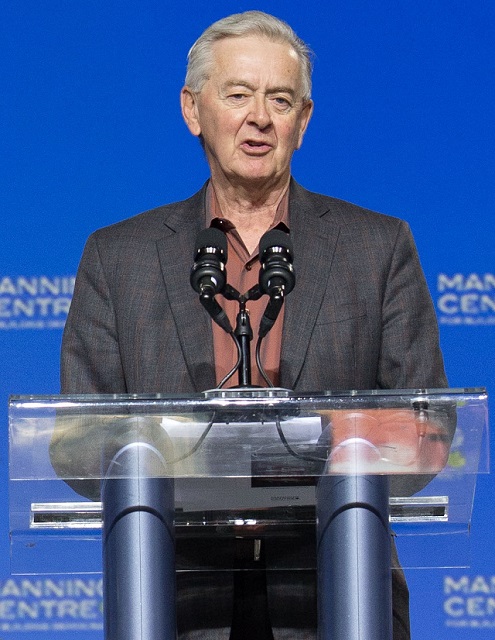
 Opinion1 day ago
Opinion1 day agoPreston Manning: Three Wise Men from the East, Again
-

 Addictions24 hours ago
Addictions24 hours agoWhy B.C.’s new witnessed dosing guidelines are built to fail
-

 Business22 hours ago
Business22 hours agoCarney Liberals quietly award Pfizer, Moderna nearly $400 million for new COVID shot contracts
-
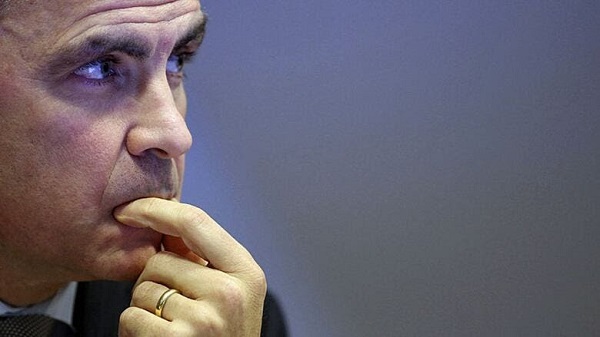
 Business2 days ago
Business2 days agoCarney government should apply lessons from 1990s in spending review
-
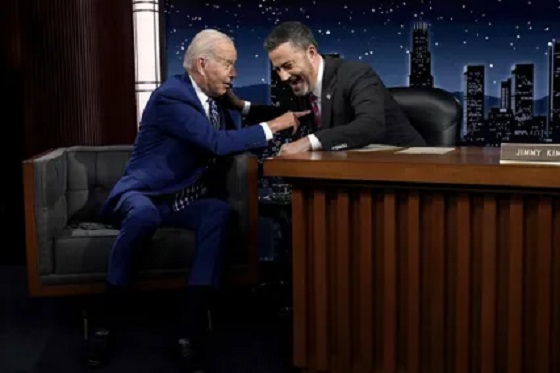
 Entertainment2 days ago
Entertainment2 days agoStudy finds 99% of late-night TV guests in 2025 have been liberal
-

 Frontier Centre for Public Policy1 day ago
Frontier Centre for Public Policy1 day agoCanada’s New Border Bill Spies On You, Not The Bad Guys
-

 Uncategorized1 day ago
Uncategorized1 day agoCNN’s Shock Climate Polling Data Reinforces Trump’s Energy Agenda
-
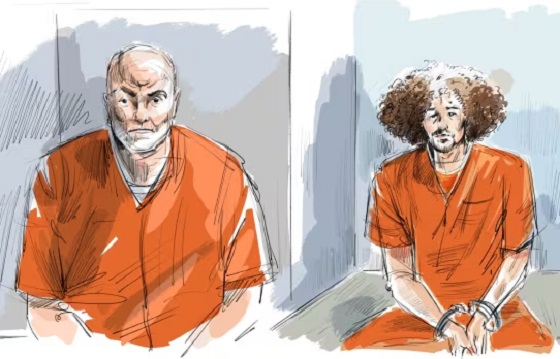
 National8 hours ago
National8 hours agoCanada’s immigration office admits it failed to check suspected terrorists’ background






